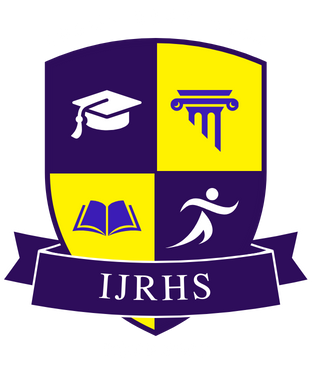![]()
Preeti Nambiar
Independent Researcher
Kerala, India
Abstract
This study delves into the phenomenon of phonological confusion among multilingual kindergarten learners in Telangana, India, illuminating the intricate interplay between children’s exposure to multiple spoken languages and their emergent phonemic competencies. Drawing on a sample of 120 children aged 4–6 from six urban kindergartens (three government-run Anganwadis and three private preschools) in Hyderabad and Secunderabad, the research employs a convergent mixed-methods approach. Quantitatively, participants completed a 40-item phonological discrimination task—adapted from the Clinical Evaluation of Language Fundamentals–Preschool—assessing minimal-pair contrasts across Telugu, Urdu, Hindi, and English phoneme inventories. Qualitatively, structured classroom observations and semi-structured teacher interviews provided contextual insights into instructional practices, code-switching patterns, and resource constraints. Findings reveal that children exposed to three or more languages (multilingual) scored significantly lower—averaging 24.3/40—than bilingual peers (32.4/40), with error rates particularly high on phonemes absent or variant across their language repertoires (e.g., English interdental fricatives /θ/, /ð/, and Urdu retroflex stops). Regression analyses indicate that both number of languages and classroom type (private vs. government) predict discrimination performance, explaining 48% of variance. Thematic analysis uncovered inconsistent phonics instruction, unstructured translanguaging practices, limited teacher training in multilingual pedagogy, and uneven parental engagement as key drivers of confusion. Based on these insights, the study proposes a targeted pedagogical framework: integrated phonological-awareness modules in mother tongues and second languages, bilingual phonics resources, professional development for teachers on scaffolded cross-linguistic transfer strategies, and home–school partnerships to reinforce phoneme awareness. Implications for curriculum design, teacher education, and policy alignment with India’s National Education Policy (2020) are discussed, alongside recommendations for longitudinal research and rural-context adaptation.
Keywords
Phonological Confusion, Multilingual Kindergarten, Telangana, Phonemic Awareness, Early Literacy
References
- Anthony, J. L., & Lonigan, C. J. (2004). The nature of phonological awareness: Component skills and developmental change. Journal of Educational Psychology, 96(2), 273–291. https://doi.org/10.1037/0022-0663.96.2.273
- Baker, C. (2011). Foundations of bilingual education and bilingualism (5th ed.). Multilingual Matters.
- Bialystok, E. (2001). Bilingualism in development: Language, literacy, and cognition. Cambridge University Press.
- Braun, V., & Clarke, V. (2006). Using thematic analysis in psychology. Qualitative Research in Psychology, 3(2), 77–101. https://doi.org/10.1191/1478088706qp063oa
- Cummins, J. (2000). Language, power, and pedagogy: Bilingual children in the crossfire. Multilingual Matters.
- Creswell, J. W., & Plano Clark, V. L. (2018). Designing and conducting mixed methods research (3rd ed.). SAGE Publications.
- Ehri, L. C., Nunes, S. R., Willows, D. M., Schuster, B. V., Yaghoub-Zadeh, Z., & Shanahan, T. (2001). Phonemic awareness instruction helps children learn to read: Evidence from the National Reading Panel’s meta-analysis. Reading Research Quarterly, 36(3), 250–287. https://doi.org/10.1598/RRQ.36.3.2
- Gallimore, R., Tharp, R., & Speck, E. (1989). Teaching without training: The case for translated assistance. American Educational Research Journal, 26(1), 59–77. https://doi.org/10.2307/1162862
- Gathercole, V. C. M., & Thomas, E. M. (2009). Bilingual first language acquisition. In E. Bialystok & F. I. M. Craik (Eds.), Lifelong bilingualism: Benefits and challenges (pp. 246–262). Cambridge University Press.
- Genesee, F. (2001). Bilingual first language acquisition: Exploring the limits of the “Firth hypothesis.” [Review of the book Handbook of bilingualism: Psycholinguistic approaches, by Coulmas, F.]. Applied Psycholinguistics, 22(2), 181–206. https://doi.org/10.1017/S0142716401222021
- García, O., & Wei, L. (2014). Translanguaging: Language, bilingualism and education. Palgrave Macmillan.
- Hoff, E., Core, C., Place, S., Rumiche, R., Señor, M., & Parra, M. (2012). Dual language exposure and early bilingual development. Journal of Child Language, 39(1), 1–27. https://doi.org/10.1017/S0305000911000149
- Kumar, P., & Latha, R. (2020). Phonemic challenges in Telugu-Hindi bilingual children: A pilot study. International Journal of Speech-Language Pathology, 22(4), 421–428. https://doi.org/10.1080/17549507.2020.1738149
- Melby-Lervåg, M., Lyster, S.-A. H., & Hulme, C. (2012). Phonological awareness predicts future reading skills: A meta-analysis. Developmental Psychology, 48(2), 421–433. https://doi.org/10.1037/a0026285
- Mohanty, A. K. (2010). Multilingualism of the unequals and predicaments of education in India: Mother tongue or other tongue? In T. Skutnabb-Kangas, R. Phillipson, A. K. Mohanty, & M. Panda (Eds.), Social justice through multilingual education (pp. 124–148). Multilingual Matters.
- Peal, E., & Lambert, W. E. (1962). The relation of bilingualism to intelligence. Psychological Monographs: General and Applied, 76(27), 1–23. https://doi.org/10.1037/h0093840
- Place, S., & Hoff, E. (2011). Properties of dual language exposure that influence 2-year-olds’ bilingual proficiency. Child Development, 82(6), 1834–1849. https://doi.org/10.1111/j.1467-8624.2011.01660.x
- Poplack, S. (1980). Sometimes I’ll start a sentence in Spanish y termina en español: Toward a typology of code-switching. Linguistics, 18(7–8), 581–618. https://doi.org/10.1515/ling.1980.18.7-8.581
- Reddy, K., & Rao, A. (2018). Early childhood education in Telangana: A comparative study of public and private preschool models. Journal of Early Childhood Research, 16(3), 201–217. https://doi.org/10.1177/1476718X17752741
- Rispens, J., & de Bree, E. (2013). The development of lexical stress in bilingual children: A longitudinal study. Applied Psycholinguistics, 34(3), 579–608. https://doi.org/10.1017/S0142716412000368
- Scarborough, H. S. (2001). Connecting early language and literacy to later reading (dis)abilities: Evidence, theory, and practice. In S. B. Neuman & D. K. Dickinson (Eds.), Handbook of early literacy research (pp. 97–110). Guilford Press.
